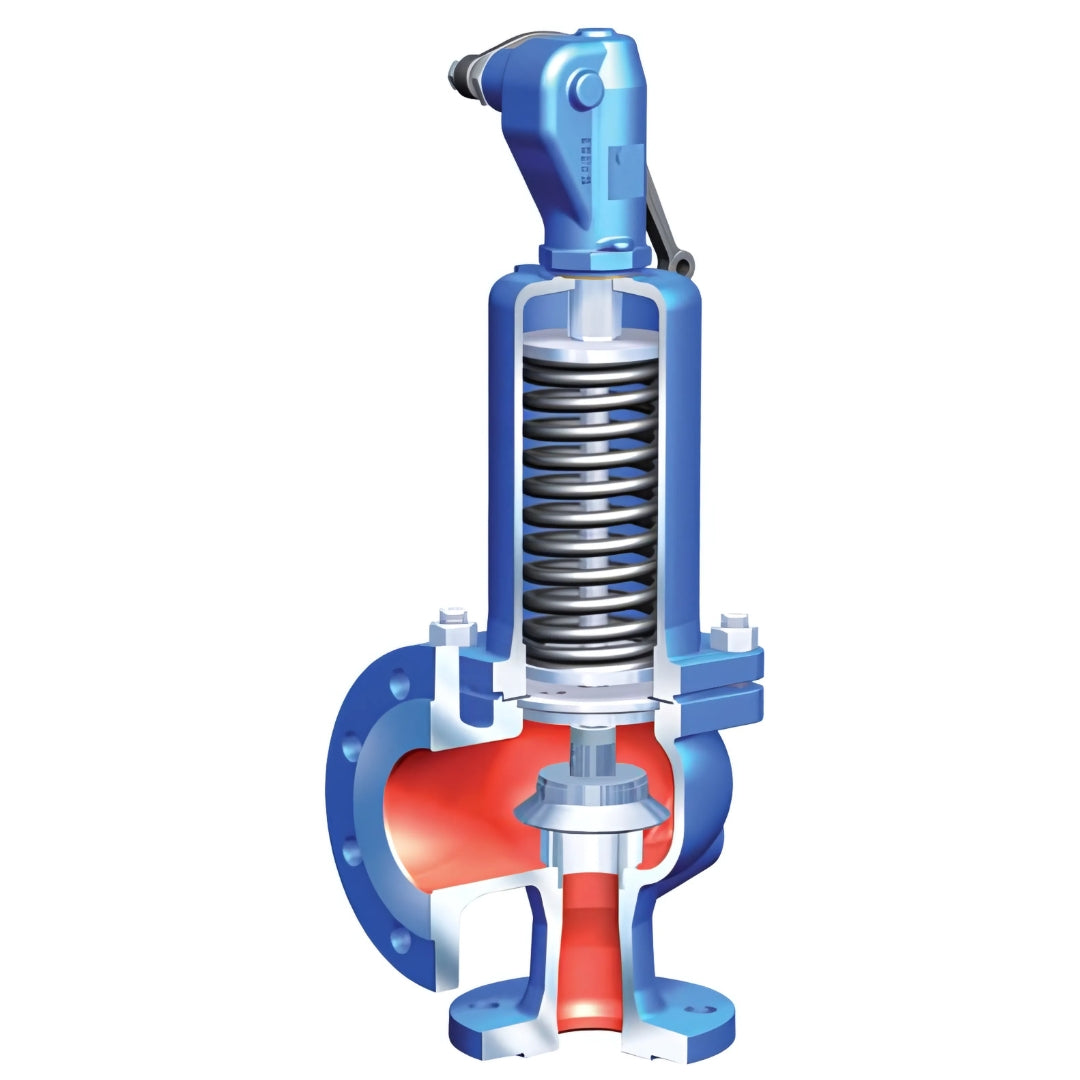Steam Valves
ARI Armaturen SAFE Safety Valve (Angle Pattern, Flanged PN40, Stainless Steel Body)
ARI Armaturen SAFE Safety Valve (Angle Pattern, Flanged PN40, Stainless Steel Body)
Couldn't load pickup availability
The ARI SAFE Safety Valve in an angle pattern design with a PN40 flange rating and a stainless steel body is built for critical overpressure protection in steam, gas, and fluid systems. Precision-engineered for safety and performance, this valve automatically releases excess pressure to prevent damage to equipment, piping, and personnel — ensuring full compliance with safety standards in high-demand environments.
Manufactured from corrosion-resistant stainless steel, the body offers excellent durability, hygiene, and resistance to aggressive media, making it ideal for applications in food processing, chemical plants, pharmaceutical systems, and clean steam lines. The PN40 flanged connections support safe, secure integration into high-pressure pipelines, while the angle pattern design promotes efficient discharge and compact installation where space is limited.
With tight sealing, dependable lift characteristics, and long service life, the ARI SAFE valve is a trusted solution where both performance and material integrity are critical.
Key Features
Stainless Steel Body
Corrosion-resistant and suitable for hygienic or aggressive media environments such as chemical or pharmaceutical plants.
Angle Pattern Design
Compact, space-saving layout allows for efficient venting and installation flexibility.
PN40 Flanged Connections
Suitable for high-pressure systems up to 40 bar, ensuring robust and leak-tight installation.
Reliable Overpressure Protection
Opens at preset limits to safeguard equipment from pressure-related failures.
Tight Shut-Off Performance
Ensures minimal leakage and safe re-sealing after pressure relief.
Ideal for Clean and Critical Applications
Widely used in steam sterilisation, high-purity process lines, and thermal relief duties.
Share

FAQ's
What is the difference between a valve and an actuator?
What types of actuators are available?
The main types of actuators are:
Pneumatic actuators – use compressed air for fast, reliable operation.
Electric actuators – use electrical power for precise control.
Hydraulic actuators – use fluid pressure for high-torque applications.
Each type offers unique advantages depending on the environment, media, and system control needs.
How do I choose the right actuator for my valve?
To select the correct actuator, consider:
Valve type and torque requirement
Power source available (air, electric, or hydraulic)
Operating environment (temperature, humidity, hazardous area)
Control signal type (on/off or modulating)
Matching actuator torque and compatibility with the valve’s ISO mounting ensures reliable performance.
What are the main types of valves used in automation?
The most common valves in automated systems include:
Ball valves – for tight shutoff and quick operation.
Butterfly valves – for larger flow control with compact design.
Globe valves – for precise throttling and flow regulation.
Check valves – to prevent backflow.
Gate valves – for full bore flow isolation.
What’s the difference between a double-acting and spring-return actuator?
Double-acting actuators use air (or power) to both open and close the valve.
Spring-return actuators use air to open (or close) the valve, and a built-in spring to automatically return it to a safe position when power or air is lost — ideal for fail-safe operation.
How often should valves and actuators be serviced?
Regular maintenance intervals depend on operating conditions, but a good rule of thumb is to inspect every 6–12 months.
This includes checking for leaks, lubrication, seal wear, and actuator responsiveness to prevent unexpected downtime.

